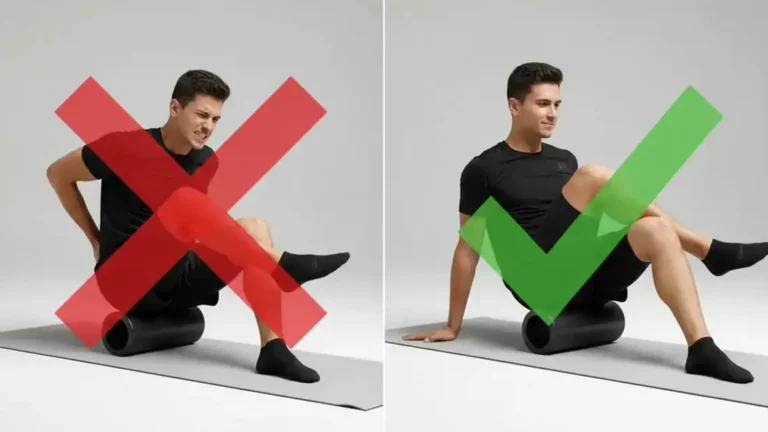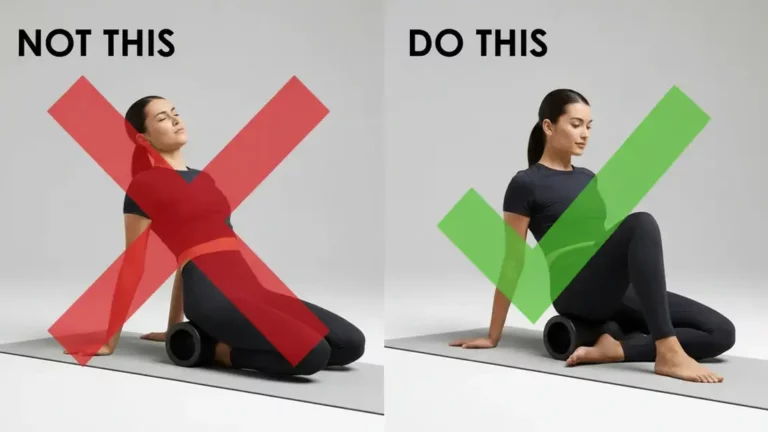Do you want to build strength, improve your speed, and feel more confident in your body?
Then you need to learn about sandbag training for teens.
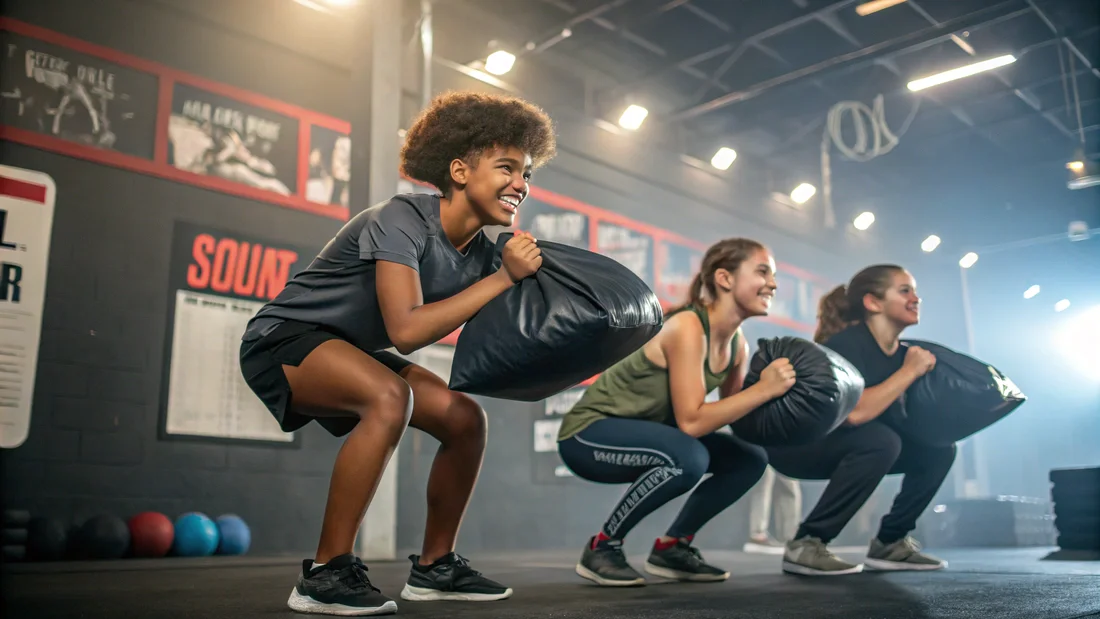
This unique approach to fitness is a great way to challenge your body, build muscle, and improve endurance, whilst also being very versatile and effective, no matter what your fitness goals are.
It’s not just about lifting weights; it’s about building a functional body that is strong, agile and powerful.
With sandbag training, you will not only get fitter, but you will also be improving your mindset, and gaining confidence in yourself, which will make you feel stronger, both physically and mentally.
Sandbags are also an affordable, portable, and versatile option for building strength, speed, and endurance and allow you to train in a variety of locations, whether you are at home, or at the gym.
This guide will show you how to use sandbags to build strength, increase speed, and develop confidence in a safe and effective way, and will help you on your fitness journey.
Are you ready to discover the power of sandbag training?
Why Sandbag Training is Great for Teens
Sandbag training for teens is a fantastic way to develop a strong, fit, and confident body.
Here’s why it’s such a great option for teens looking to level up their fitness:
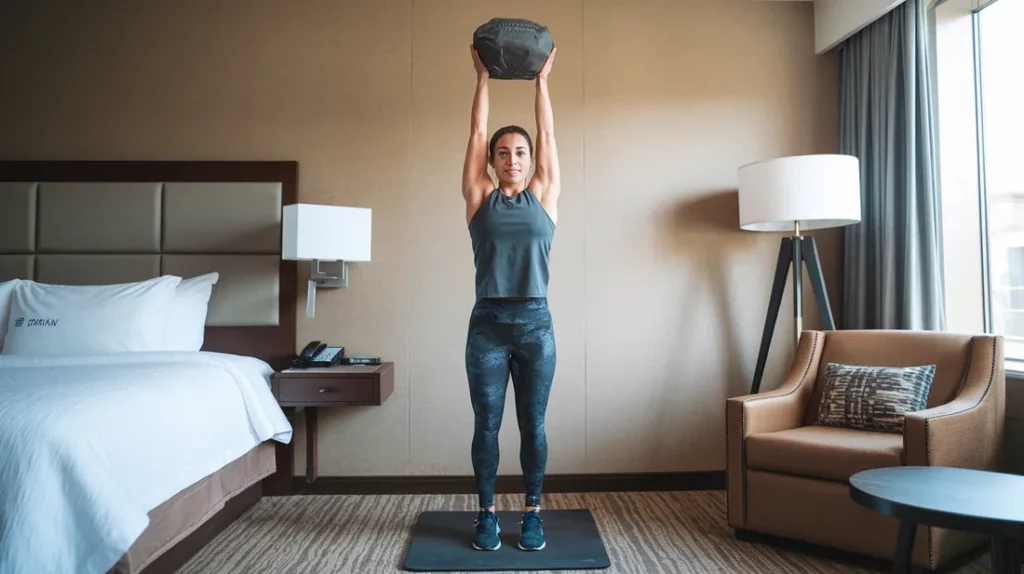
Full Body Benefits
- Balanced Fitness: Sandbag training will build strength, endurance, power, and core stability, all at the same time. This is a great way to ensure that you are achieving a balanced level of fitness, and are working all of your major muscle groups.
- Full Body Workout: The training will also help you to use your entire body to perform the exercises, making it an efficient and powerful workout routine.
Safe and Adaptable
- Low Impact: Sandbag exercises are designed to be low impact, which means that they are gentle on your joints and minimize the chance of injury.
- Customizable: The exercises can be easily modified to fit your individual needs, goals and current level of fitness. This makes the training accessible to all teenagers, regardless of their ability, or experience.
- Safe to Use: You can do these exercises safely at home or at the gym, with a minimal chance of injury, as long as you are focusing on proper form, and also listening to your body.
Builds Confidence
- Achieving Goals: Sandbag training will help you to achieve your fitness goals, and will give you more confidence in your body, by allowing you to feel stronger, fitter, and more powerful.
- See Results: As you build strength, and start to see results, you will also feel a sense of accomplishment. The sense of achievement will help you to develop more self belief, and confidence in your ability.
Affordable and Accessible
- Low Cost: Sandbags are a very affordable alternative to expensive gym equipment. You can also create your own DIY sandbag if you are on a budget.
- Convenient: They can easily be used at home, without the need for a gym, and they are also very versatile and can be adapted to a wide range of different environments, and different spaces.
- Practical: You can also do this type of training at any time of day, and will fit seamlessly into your busy routine.
Essential Sandbag Exercises for Teens
These are some of the key sandbag exercises for teens to build strength, improve speed and agility, whilst also focusing on good technique, and safety.
They are designed to help you achieve the most effective workout, while also making it fun.
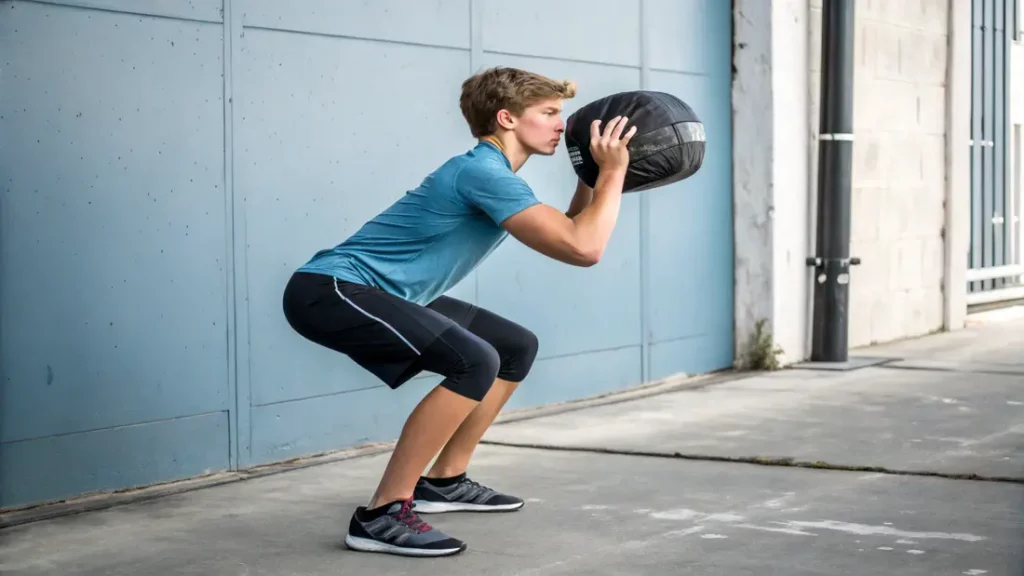
Exercises to Build Strength
Sandbag Squats:
- Instructions: Stand with your feet shoulder-width apart, holding the sandbag in front of your chest. Squat down, while keeping your core engaged and your back straight. Push back up to the starting position, and engage your glutes.
- Benefits: Builds strength in your legs, core and glutes, which are essential for all types of physical activities, and sports.
- Safety Tips: Focus on proper form, and do not let your knees go past your toes. If you feel any pain, you must stop the exercise immediately.
Sandbag Deadlifts:
- Instructions: Stand with your feet shoulder-width apart with the sandbag in front of you. Bend at the hips, whilst keeping your back straight, and grab the sandbag. Engage your core and glutes and stand up straight.
- Benefits: Strengthens your back, core, and glutes, and also improves posture, and stability, as well as improving overall functional strength.
- Safety Tips: Keep your back straight, and do not round your back, and focus on using your legs to lift the weight, and not your back. You must also use a weight that is suitable for you.
Sandbag Rows:
- Instructions: Bend at the hips, while keeping your back straight, and grab the sandbag. Use your back muscles to pull the sandbag towards your chest, while maintaining a straight back. Lower the weight slowly.
- Benefits: Strengthens your back and arm muscles, and improves your posture, core strength and grip strength.
- Safety Tips: Keep your back straight, and your core muscles engaged.
Exercises to Improve Speed and Agility
Sandbag Lunges:
- Instructions: Hold the sandbag in front of you, or on your shoulders. Step forward with one leg, and bend both knees to 90 degrees. Ensure that your front knee does not go past your toes.
- Benefits: Strengthens legs and improves balance, agility and core strength. It will also improve coordination.
- Safety Tips: Make sure to keep your back straight, and your core engaged. Avoid pushing yourself too far.
Sandbag Carries:
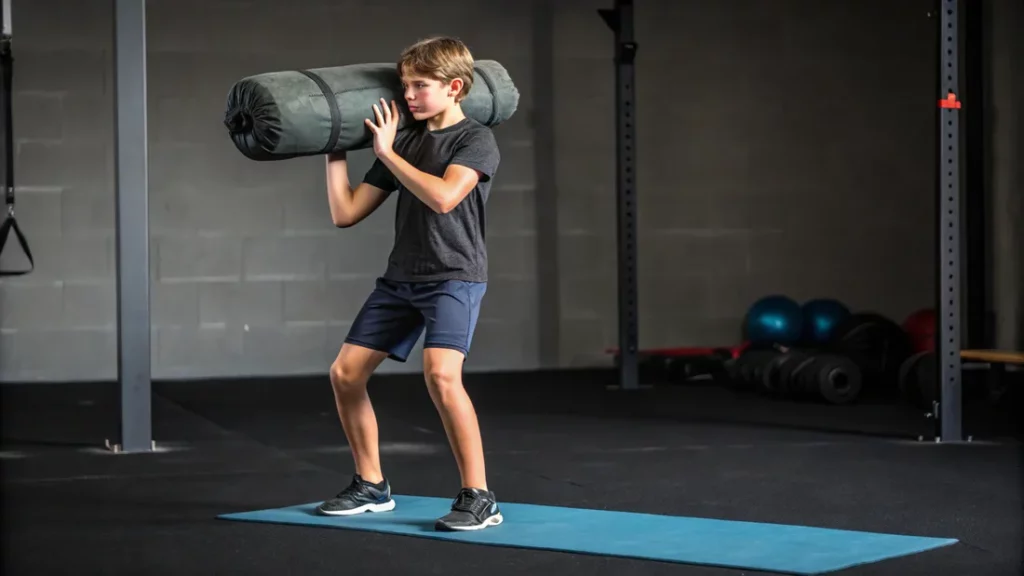
- Instructions: Hold the sandbag in a way that is comfortable for you, such as hugging it to your chest, or carrying it over your shoulder. Walk quickly while maintaining proper form, and core engagement.
- Benefits: Improves core stability, balance, endurance and grip strength, as well as improves your overall fitness levels.
- Safety Tips: Always maintain a straight back, and do not hunch forward. Try to keep a controlled pace.
Sandbag Burpees:
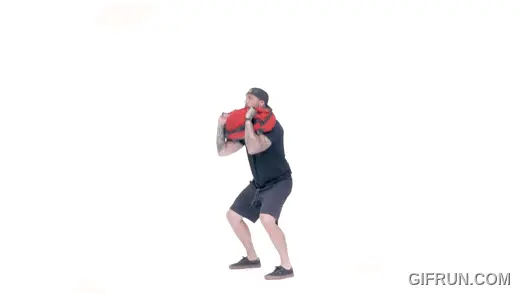
- Instructions: Start by placing the sandbag on the floor. Bend at the hips, and place your hands on the sandbag. Jump your feet back, and lower your body to the floor. Jump your feet back to the squat position, and then stand up. You can lift the sandbag over your head at the end of the movement if you are more advanced.
- Benefits: A full body exercise, that builds speed, agility, power, strength, and endurance.
- Safety Tips: Always use good form during the exercise, and ensure that you are not compromising your technique. You must also ensure that your back is straight throughout the movement.
Sample Sandbag Workout Routine for Teens
These sample workout routines are designed to help teenagers build strength, improve speed, and enhance their fitness using sandbag training.
Remember to always start slowly, focus on proper technique, and listen to your body.
Beginner Routine – Building a Foundation
- Goal: Master the basic sandbag exercises, and build a solid base level of fitness.
- Warm-Up: 5 minutes of light cardio (jumping jacks or high knees) and dynamic stretching (arm circles, leg swings).
- Workout:
- Sandbag Squats: 2 sets of 8-10 reps.
- Sandbag Rows: 2 sets of 8-10 reps.
- Sandbag Lunges: 2 sets of 8-10 reps per leg.
- Sandbag Carries: 2 sets of 30 seconds.
- Cool-Down: 5 minutes of static stretching. Focus on stretching all the major muscle groups.
- Rest: Ensure you have 60-90 seconds of rest between sets, to allow your muscles time to recover.
Emphasis: Focus on correct technique, engaging your core muscles and slow controlled movements.
Intermediate Routine – Increasing Intensity and Challenge
- Goal: Progress to more challenging exercises and variations, and increase the overall intensity of your workout.
- Warm-Up: 5-10 minutes of light cardio and dynamic stretching.
- Workout:
- Sandbag Squats: 3 sets of 10-12 reps (add variations such as a front squat or goblet squat)
- Sandbag Rows: 3 sets of 10-12 reps (try using different grip positions).
- Sandbag Lunges: 3 sets of 10-12 reps per leg (try variations such as lateral lunges or rotating lunges).
- Sandbag Carries: 3 sets of 45 seconds (try different types of carry, such as front, or shoulder carries).
- Sandbag Burpees: 2 sets of 5-8 reps.
- Rest: 45-60 seconds of rest between sets, to allow your body to recover and prepare for the next exercise.
- Cool-Down: 5-10 minutes of static stretching.
Workout Frequency
- Beginners: You should start with 2 sandbag workout routines per week, with rest days in between.
- Intermediate: If you have more experience with working out, then you can perform the routines 3 times per week, whilst ensuring that you are getting enough rest.
- Listen to Your Body: Always ensure that you are listening to your body, and never try to train through any pain. You should always take rest days when your body needs them.
Rest and Recovery
- Prioritize Rest: You should always make sure that you are getting enough sleep every night (8-9 hours).
- Active Recovery: Try to incorporate gentle stretches or activities on your rest days, to improve blood flow and to help your muscles to recover.
- Nutrition: Ensure that you are eating a well balanced diet, that is full of essential vitamins, minerals and nutrients.
- Hydration: Always make sure that you are well hydrated, as this will improve your performance and your recovery.
Choosing the Right Sandbag for Teen Training
Choosing the right sandbag is important for ensuring that teenagers can perform the exercises correctly and safely.
Here are the key factors to consider:
Weight Recommendations
- Beginner Weights: Start with a lighter sandbag (5-15 lbs) and focus on mastering the correct form for the exercises.
- Progression: As your fitness levels improve, gradually increase the weight in small increments (2-5 lbs).
- Always Focus on Safety: Always make sure to choose a weight that is appropriate for your age and your current fitness level. You should never train with weights that are too heavy, or they may increase the risk of injury.
Size and Material
- Comfortable Size: Choose a sandbag that is not too bulky, and that feels comfortable when it is held.
- Durable Material: Choose a sandbag made from durable materials, such as heavy-duty nylon or canvas, as this will ensure that it is designed to last.
- Easy to Clean: You should also ensure that the material is easy to clean and maintain.
Handle Design
- Multiple Handles: Look for a sandbag that has multiple handles, that are placed strategically, on the sides, ends and top, to allow you to perform a range of exercises, and to give you a variety of different grips.
- Comfortable Grip: The handles should also be comfortable and easy to grip, and they should also be slip resistant.
DIY Options
- Duffel Bag: If you are looking for a budget friendly option, you can use an old duffel bag, and fill it with sand. Ensure that you close the bag tightly, to prevent any sand from leaking.
- Heavy-Duty Bag: You can also buy a heavy-duty bag with a zipper, and you can use this as a low cost sandbag.
- Inner Liners: For both of these options, you must use strong inner liners to keep the sand from spilling. You can use a heavy duty garbage bag, or waterproof plastic bags.
Safety and Injury Prevention for Teenagers
When using sandbag training for teens, it is vital to prioritize safety and to ensure that you are performing the exercises correctly, with proper form and technique.
Here are some important guidelines to help you minimize the risk of injury, and to allow you to train safely:
Start Slowly
- Light Weight: Always start with lighter weights and do not try to do too much too soon.
- Focus on Mastering the Basics: Master the basic movements first before progressing to more difficult exercises.
- Proper Technique: Focus on proper form and technique throughout each exercise.
Proper Form
- Straight Back: Keep your back straight when you are performing the exercises, and you must avoid rounding your back.
- Core Engagement: You must also engage your core muscles to help stabilize your body.
- Controlled Movements: Always try to perform the exercises with slow, controlled movements, rather than using momentum.
Listen to Your Body
- Pain is a Signal: Always stop the exercise immediately, if you are feeling any pain.
- Fatigue: You must not try to train through fatigue. It is vital that you take a rest day when your body needs it.
- Discomfort: If you are feeling any discomfort during the exercises, stop immediately, and try a different variation, or perform the exercises with a lighter weight.
Common Mistakes to Avoid
- Rounding Your Back: Always keep your back straight during all exercises, and avoid hunching or rounding forward, as this can lead to injuries in the lower back, and neck.
- Overtraining: Ensure that you are not overtraining, and allow your body adequate time to rest and recover, between training sessions.
- Using Momentum: Focus on using your core, and leg muscles to lift the weight and avoid using momentum to swing the sandbag, and do not rush through the exercises.
When to Seek Professional Advice
- Existing Conditions: If you have any pre-existing injuries, or medical conditions, you must speak to your doctor before beginning any new exercise routine.
- Recurring Pain: If you have any recurring pain or injury, then you must speak to a physical therapist, or a doctor, to ensure that you are not making the condition worse.
- Fitness Professional: It is best to speak to a fitness professional, to ensure that you are performing the exercises correctly, and using proper technique.
FAQ (Frequently Asked Questions)
Here are some common questions and answers about sandbag training for teens:
- What is the best way to start sandbag training as a teen?
- It is best to start slowly, and with lighter weights, and focus on mastering the basic movements and proper technique. Do not try to rush the process, or to lift weights that are too heavy for you, and instead you must prioritize good form.
- It is also beneficial to start with a coach, or mentor, to ensure you are learning the techniques correctly.
- What is the correct way to do sandbag squats and lunges?
- Sandbag Squats: You should perform a controlled movement, by pushing your hips back, and bending your knees, whilst keeping your back straight and engaging your core. You should not go too far down, and should keep your knees over your toes.
- Sandbag Lunges: When you are performing lunges, you must make sure that your core is engaged, and that your front knee does not go past your toes, and you must also ensure that your back is straight. If you are unsure you can also perform a reverse lunge, which is often easier to perform with good technique.
- How can sandbag training improve athletic performance?
- Sandbag training is designed to build functional strength, and to improve core stability and balance, which are all vital for a wide range of different sports. It also improves speed and agility and can improve your overall endurance.
- It is a great way to gain explosive power which will help you to perform at a higher level.
- Is sandbag training safe for teenagers?
- Yes, sandbag training is safe for teenagers, if you are focusing on proper form, and you are starting with a lighter weight. You should always take rest days, and ensure that you are listening to your body.
- It is always a good idea to consult with a coach or fitness professional, before starting a new training program, to ensure that it is suitable for you.
- How often should I use sandbag training as a teen?
- You should start with 2-3 sessions per week, with rest days in between. Make sure that you are getting enough sleep, and that you are not overtraining.
- As your body becomes more accustomed to the training, you can then gradually increase the frequency of your workout routines.
Conclusion – Unleash Your Potential with Sandbag Training
You now have all the information that you need to start your fitness journey with sandbag training, and you can take advantage of this effective, and versatile method of training.
If you are consistent with your training, you will start to see real gains in your strength, speed, and your overall fitness, and confidence.
Remember to always focus on proper form, and to listen to your body, to ensure that you are not causing any injury, and that you are able to progress safely.
Now it is time to take action and begin your transformation. Pick up a sandbag, and let’s get started on your journey to a stronger, more confident, and more powerful you.
References
- Lloyd, R. S., Faigenbaum, A. D., Stone, M. H., Oliver, J. L., Jeffreys, I., Moody, J. A., … & Myer, G. D. (2016). Position statement on youth resistance training: the 2014 International Consensus. British Journal of Sports Medicine, 50(8), 432-445. https://bjsm.bmj.com/content/48/7/498
- Ramírez-Campillo, R., Álvarez, C., Henríquez-Olguín, C., Baez, E. B., Martínez, C., Andrade, D. C., & Izquierdo, M. (2014). Effects of plyometric training on maximal-intensity exercise and endurance in male and female soccer players. National Institutes of Health (NIH) (.gov). https://pubmed.ncbi.nlm.nih.gov/26197721/

